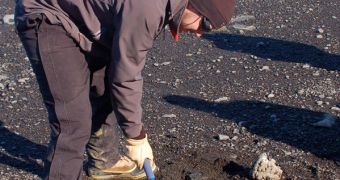Scientists widely agree that the Cretaceous-Paleogene (K-T) extinction event 65 million years ago led to the death of dinosaurs and countless other species. Now, emerging evidence is suggesting that this event was the second in a closely-timed series.
In other words, another extinction took place closely before, one that did not destroy the same number of species as the one that followed. The conclusion belongs to a new study by investigators at the University of Washington.
According to the group, massive volcanic eruptions were the primary cause of the first extinction event. Life on the ocean floor would have been the most severely affected, the team goes on to say, adding that the planet itself may have warmed slightly as a result.
Much is known about the K-T event, as it is the most studied extinction event ever. Scientists believe that a large asteroids, at least 6 miles (10 kilometers) in diameter, struck into what is now Mexico's Yucatan Peninsula, producing a chain of effects that eventually killed off all the giant reptiles.
The fact that this happened is of great use to us, since it set the stage for the emergence of mammals. Before the K-T event, this group was confined to very small dimensions, and to earning a meager existence in underground dens.
What the UW team found while studying the state of the environment shortly before this extinction is that lifeforms on the ocean floor were already being threatened with extinction at the time the asteroid made its impact.
This was especially true for clams and snails, which were being killed off by the effects of huge volcanic eruptions taking place in what is now the Deccan Plateau, in India, Astrobiology Magazine reports.
“The eruptions started 300,000 to 200,000 years before the impact, and they may have lasted 100,000 years,” UW PhD student in Earth and space sciences, Thomas Tobin, explains.
Long-term warming occurred shortly afterwards, due to the high amounts of aerosols and greenhouse gases that these eruptions released into the atmosphere. “The aerosols are active on a year to 10-year time scale, while the carbon dioxide has effects on a scale of hundreds to tens of thousands of years,” Tobin adds.
He and his team conducted their research in a fossil-rich area on Seymour Island, off the Antarctic Peninsula. Details of the work appear in a paper published in the esteemed scientific journal Palaeogeography, Palaeoclimatology, Palaeoecology.

 14 DAY TRIAL //
14 DAY TRIAL //